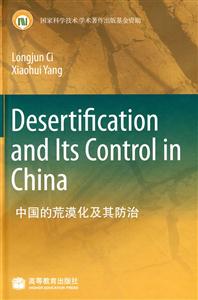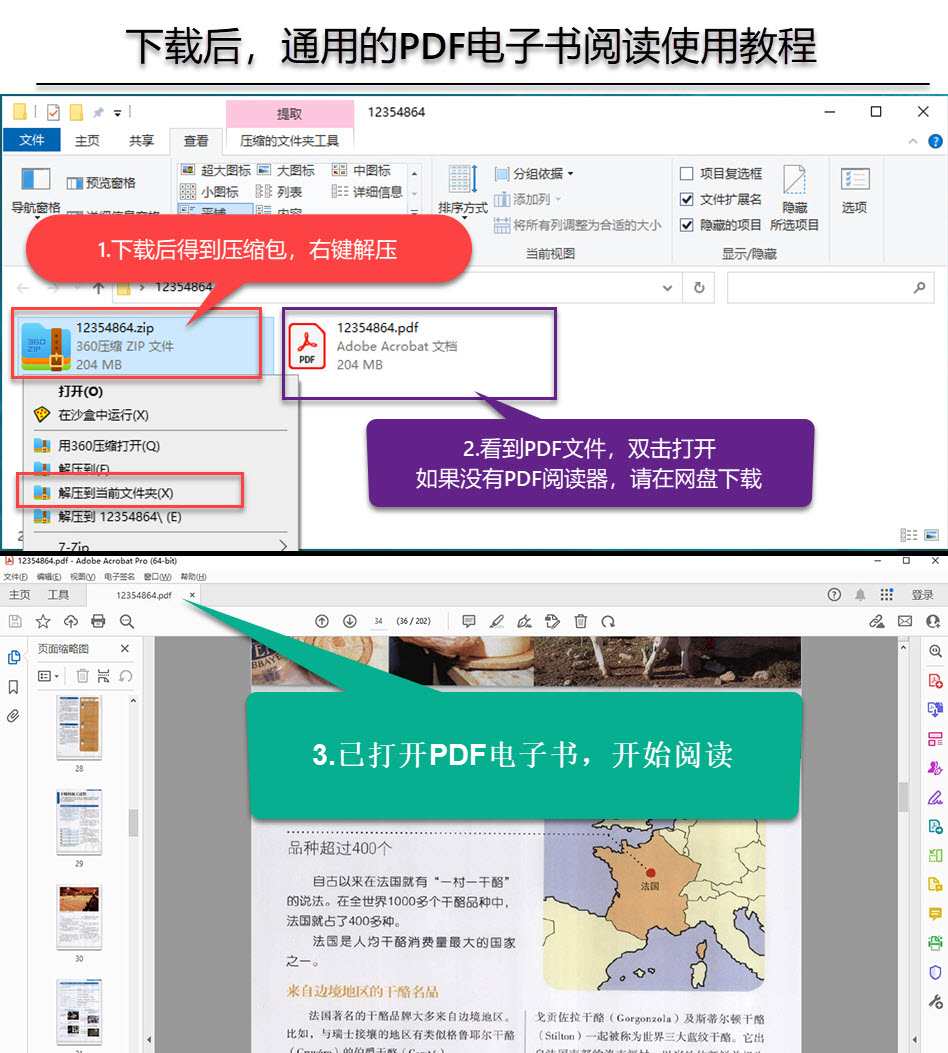中国的荒漠化及其防治
节选
[
《中国的荒漠化及其防治(英文版)》内容简介:Desertification and Its Control in China comprehensively discusses desertification from the views of formation, distribution, development and control models. This book truly elucidates basic theory and control models of desertification, especially the numerous results from research carried out for the UN Convention to Combat Desertification. This book will provide a theoretical and practical basis for ecological and environmental planning and design as well as guidelines for prevention/restoration for desertification projects. It will also provide practical examples.
]
相关资料
[
插图:desert interior, is covered by sand dunes. Eighty-five percent of the sand dunes are mobile. Fixed and semi-fixed dunes occupy only 15% of the desert area, and they are mainly vegetated with Tamarix spp. These fixed and semi-fixed dunes are only found in the periphery of the desert, on plains near the pied- mont and bordering the rivers which extend into the internal desert. (ii) The sand dunes are huge with complex forms The internal part of the Taklimaknn Desert is mainly covered by exposed huge sand dunes, which are often 100-150 m high, with maximum of 200 m to 300 m. Within the desert, dunes of more than 50 m in height account for 8070 of the total area of the mobile dunes, and some specific dune forms are unique and are not found in other deserts in China. For example, in the easternhalf of the Taklimakan Desert, huge complex dune chains generally extendfor 5-15 km, with a maximum length of 30 km, and are typically 1-2 kmwide. The leeward slopes are tall and steep while windward slopes are coveredwith secondary dune chains. The inter-dunes are flat with widths of 1-3 kmextending for a considerable distance. These inter-dunes are segmented by lowdunes which are vertical to them, forming some closed depressions with lakesscattered among them. In the center of the desert (820-85~ east longitude) andthe southwestern desert, there are complex longitudinal sand ridges, whichnormally extend for 10-20 km, with a maximum of 45 km, typically parallelto the prevailing wind direction. The secondary dunes, above these ridges,are perpendicular to the main wind direction. The pyramidal dunes developin regions with changing wind directions, distinct landform undulations, oradjacent to the mountains, the distribution of which can be isolated (suchas between Yutian and Minfeng), or continuous irregular ridge-mounds (suchas between Qiemo and Minfeng). In addition, there are tall dome-shapedsand dunes in the northern desert and scale-like dunes in the western andnorthwestern parts.(iii) Plains within the desert have abundant water resourcesAlthough the Taklimakan Desert mainly consists of mobile dunes, thereare plains where the desert plant resources are abundant (mainly desert ri-parian forests —— Populus euphratica, Populus pruinosa and Tamarix ramosis-sima). These plains are distributed in the river valleys in the desert interior,along the riverbanks at the desert edges and the front edge of alluvial-fluvialplains. Some rivers, such as the Hetian, Keliya, Niya, Andi’er and Yatongguzirivers, flow into the desert interior, either flowing across the entire desert, oracross two-thirds of the desert or 100-200 km into the desert. In the plainsalong these rivers, due to intermittent flooding, there is abundant shahowunderground freshwater beneath the alluvial layer, which can be found 1-3 m below ground. In some areas, the spring outflows form small lakes inthe interdune wadis or dry river beds. Hence, Populus euphratica, Populuspruinosa, Tamarix ramosissima shrubs and meadow reeds grow well.
]
本书特色
[
《中国的荒漠化及其防治(英文版)》是国家科学技术著作出版基金资助。
]
内容简介
[
desertification and its control in china comprehensively discusses desertification from the views of formation, distribution, development and control models. this book truly elucidates basic theory and control models of desertification, especially the numerous results from research carried out for the un convention to combat desertification. this book will provide a theoretical and practical basis for ecological and environmental planning and design as well as guidelines for prevention/restoration for desertification projects. it will also provide practical examples.
]
目录
1 concept and global status of desertification 1.1 concept and scientifc connotations of desertification 1.1.1 definition of desertification 1.1.2 theoretical background to desertification 1.1.3 scientific basis for combating desertification 1.2 current status of global desertifieation 1.2.1 introduction to distribution of global desertification 1.2.2 regional features of desertification-prone lands and strategies to combat desertification 1.2.3 status of desertification and activities to combat desertification in most affected developing countries references 2 natural background of china’s drylands 2.1 deserts, sandlands and the gobi 2.1.1 deserts 2.1.2 sandlands 2.1.3 gobi 2.2 loess plateau 2.2.1 geomorphological features of the loess plateau 2.2.2 soil 2.2.3 climatic characteristics of the loess plateau 2.2.4 vegetation 2.3 loess-desert transitional belt 2.3.1 role of deserts in the formation of loess 2.3.2 distribution of the loess 2.3.3 physical properties of the loess 2.3.4 loess-desert transitional belt 2.4 droughts 2.4.1 historical record of climate change and droughts 2.4.2 climatic change and droughts in modern times 2.4.3 possible trends in droughts 2.5 sand-dust storms 2.5.1 sand-dust storms and their main sand sources 2.5.2 factors influencing sand-dust storms occurrence in china 2.5.3 relationship between sand-dust storm frequency and desertification 2.5.4 sand-dust storms affecting beijing references 3 natural resources and their utilization in the drylands of china 3.1 climate resources and their potential capability 3.1.1 solar radiation and photosynthetic production potential 3.1.2 temperature and the light-temperature production potential 3.1.3 precipitation and light-temperature-water production potential 3.2 land resources and prospects for agricultural development 3.2.1 quality, quantity, and use status of land resources and existing problems 3.2.2 development potential of agriculture and measures to develop the land production potential 3.3 water resources and ecological water use 3.3.1 type, quantity and distribution of water resources in drylands 3.3.2 water resources use status and existing problems 3.3.3 strategies for water resources development and managing water utilization 3.4 protection and utilization of biological resources 3.4.1 biological resources and their current status of utilization 3.4.2 specific biological resources and their industrial development 3.5 mineral resources and their development and utilization prospects 3.5.1 metal mineral resources 3.5.2 non-metal mineral resources 3.5.3 energy resources references 4 sandy deserts, gobi, sandlands and sandified land in dryland 4.1 general situation of sandy deserts, gobi, sandlands and sandified land 4.1.1 general distribution range of sandy deserts, gobi, sandlands and sandifled land 4.1.2 distribution of sandy deserts, gobi, sandlands and sandified land 4.1.3 development trend and current situation of land sandifleation 4.2 sandy deserts, gobi and sandifled land in xinjiang uygur autonomous region 4.2.1 sandy deserts, gobi and sandified land status and distribution 4.2.2 effects of sandification 4.3 inner mongolia autonomous region 4.3.1 present situation, type and areas of deserts, gobi, sandland and sandified land 4.3.2 effects of sandification 4.4 tibet autonomous region 4.4.1 bioclimatic zones of desertified land on the tibetan plateau 4.4.2 types of desertified lands on tibetan plateau 4.4.3 driving force of desertification 4.4.4 hazards and pressures of desertification on the environment and development 4.5 gansu province 4.5.1 current situation and distribution of deserts, gobi and sandified land 4.5.2 effects of sandification 4.6 qinghai province 4.6.1 current situation and distribution of deserts, gobi and sandified land 4.6.2 effects of sandification 4.7 ningxia hui autonomous region 4.7.1 current situation and distribution of deserts, gobi, sandlands and sandified land 4.7.2 effects of sandification 4.8 shaanxi province 4.8.1 distribution of sandlands and sandified land 4.8.2 effects of sandification 4.9 other provinces and cities 4.9.1 beijing 4.9.2 tianjin 4.9.3 hebei province 4.9.4 shanxi province 4.9.5 liaoning province 4.9.6 jilin province 4.9.7 heilongjiang province references 5 water erosion in the drylands of china 5.1 distribution of water erosion and its regional characteristics 5.1.1 distribution scope 5.1.2 regional characteristics (tang et al., 2004) 5.2 damage from soil erosion 5.2.1 impacts of soil erosion on land productivity 5.2.2 water erosion and water quality 5.2.3 water erosion and mud and silt sedimentation 5.3 fundamental water erosion control measures 5.3.1 small watershed management 5.3.2 small watershed management on the loess plateau references 6 soil salinization 7 steppe degradation and rehabilitation in northern china8 biological and technical approaches to control windy desertification 9 engineering and technological measures for combating desertification 10 optimized sustainable eco-production paradigms in latin name index
封面

书名:中国的荒漠化及其防治
作者:慈龙骏
页数:513
定价:¥89.0
出版社:高等教育出版社
出版日期:2010-04-01
ISBN:9787040257977
PDF电子书大小:107MB 高清扫描完整版
本文标题:《中国的荒漠化及其防治》PDF下载
资源仅供学习参考,禁止用于商业用途,请在下载后24小时内删除!

